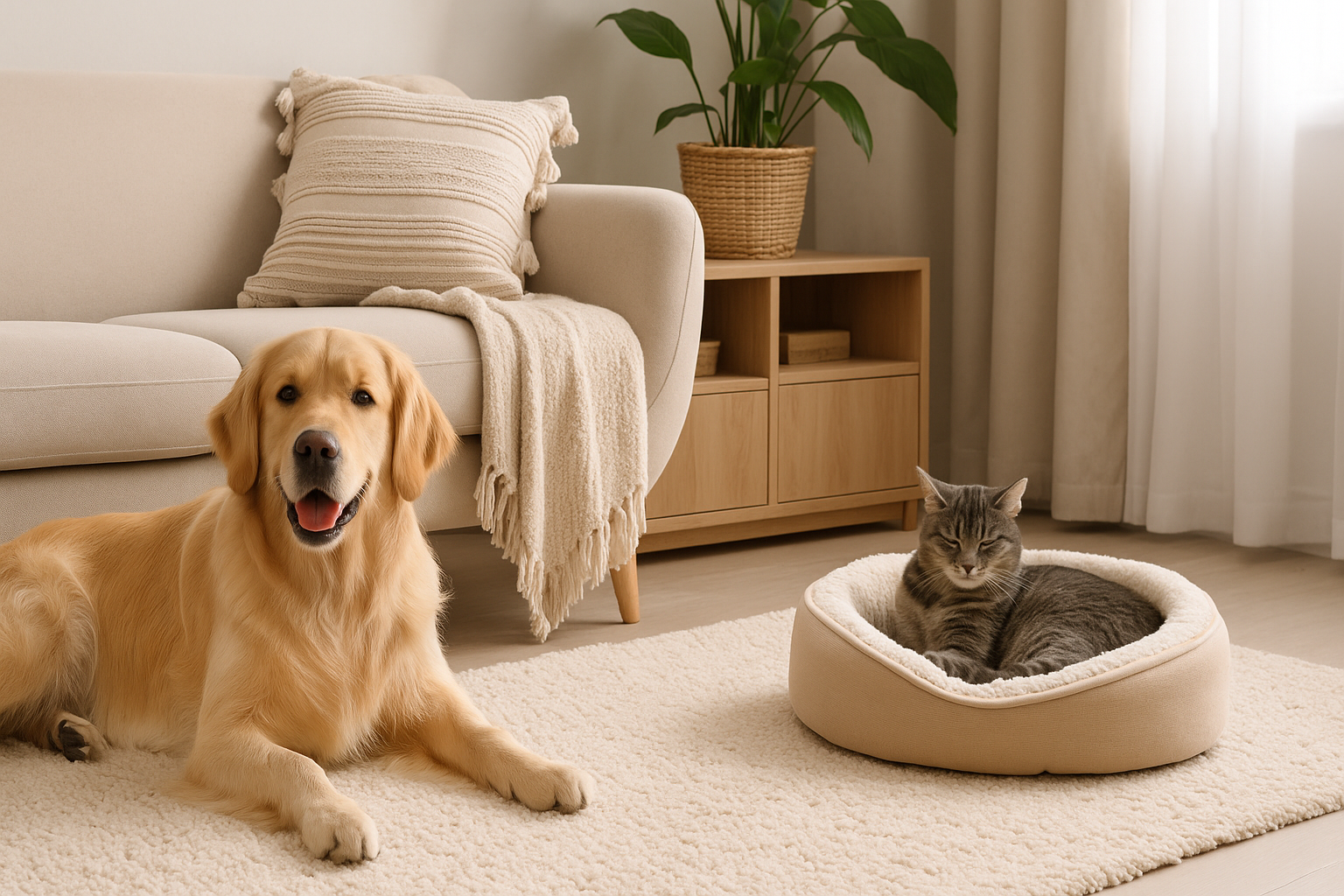Taking good care of your pet often lies in the small gestures. It could be moving their bed away from the cold, creating a sunny spot for napping, or turning a cardboard box into a treasure chest. It’s these little details that make a difference. While new toys and fancy setups are nice, what truly sparks joy in your furry friend’s eyes is your attention and the trust you build together.
A Home Beyond the “Instagram Aesthetic”
Creating a great environment for your pet goes much deeper than how it looks; it’s about respecting and understanding their natural behaviors and routines.
Safe Havens for Rest
Pets have their own sleep schedules and rituals. Make sure they have a quiet spot, away from noise, where they can rest well. In homes with multiple pets, pay attention to whether they like to be close to each other or prefer some space apart.
Mess-Free Feeding
Set a feeding schedule, keep their bowls clean, and change their water frequently. This simple detail helps prevent food fights and annoying pests like ants.
Creative Play Areas
The value of toys isn’t in the price but in the fun! Surround them with the toys they have, create surprise boxes, or hang ribbons and balls in places they can reach. What they really want is novelty and connection, not tags.
Safety Always Comes First
A pet-friendly home prioritizes safety in every corner. Here’s how:
- Protect Hazardous Items: Store or hide wires, ribbons, toxic plants, and cleaning supplies.
- Window Screens: Install screens on windows and balconies to prevent dangerous falls, especially for curious cats.
- Well-Stored Medications: Keep all human medications and food locked away from curious paws.
Temperature and Comfort: Sharing the Climate
Pets are sensitive to temperature changes, often feeling heat and cold more acutely than we do.
Seasonal Tips for Pets:
- Summer: Provide shade and fresh water, and avoid hot pavement during walks.
- Winter: Have blankets ready and keep their beds away from cold drafts.
Observing Behavior
Pay attention: does your pet seek cooler spots or pant excessively in the heat? In the cold, do they shiver or burrow? It’s your role to help them stay comfortable and adjust as needed.
Enrichment: Exercising Body and Mind
A happy pet is an active pet. Offer challenges that stimulate curiosity and encourage physical activity:
- Sensory Challenges: Hide treats around the house or set up simple obstacles.
- Fun Routine: Incorporate daily playtime using recycled items to reduce boredom and anxiety, improving your friend’s health while strengthening your bond.
Environment: Sounds, Scents, and Atmosphere
The atmosphere of your home is crucial for your pet’s emotional well-being:
- Soothing Sounds: Soft music can help calm pets during stressful situations.
- Controlled Scents: Use mild, natural scents sparingly to create a tranquil environment.
Avoiding Overstimulation
Loud noises, strong scents, and sudden changes in climate can unsettle pets. Maintaining a calm, gradual approach to changes in your home will make their transition smoother.
Cleanliness in the Right Measure
Keeping the house clean is essential for a healthy environment:
- Weekly Cleaning: Wash blankets, beds, and toys at least once a week.
- Bowls and Litter Boxes: Don’t forget to clean food bowls and litter boxes to prevent disease and unwanted pests.
Introducing New Experiences
Any change—whether new furniture, guests, or renovations—should be introduced gently:
- Comfort and Familiarity: Keep familiar items nearby to provide comfort during transitions.
- Reward-Based Approach: Use rewards and predictable routines to help your pet feel secure in new situations, without pressure for immediate interaction.
Presence: The Power of Being There
What truly makes a difference in your pet’s happiness isn’t the size of your home, but how much time you dedicate to being with them.
Building Bonds
Spend quality time together—whether sitting, playing, or caring for them daily. Pay attention to behavioral changes or mood shifts; these are your pet’s ways of communicating their needs and feelings of belonging.
Start Small, Dream Big
Perfection is not a reality for anyone. Start with small actions—moving a bed, eliminating a hazard, inventing a new game, or simply slowing down and observing your pet’s unique needs.
Daily Improvements Lead to Love
Ultimately, an ideal home is built from daily improvements and efforts that foster love and respect between you and your pet. What new care ideas will you try this week? Your four-legged friend will surely notice the difference!
